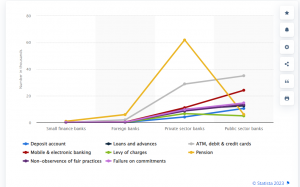Debt collections is a complex and sensitive part of the lending lifecycle for banks, NBFC and fintech lenders that demands agility, expertise, adherence to regulations, and a keen understanding of human behavioural dynamics. While recovering outstanding debts is crucial for financial stability, it is vital to avoid common pitfalls that have the potential of tarnishing relationships and may lead to legal repercussions. Below are some of the most common mistakes to avoid.
1. Ignoring compliance and regulations: One of the cardinal mistakes to avoid in debt collections is neglecting to adhere to the stringent regulations that govern the industry. In India, the Fair Practices Code by the Reserve Bank of India outlines principles of transparency, fairness, responsible lending, and includes guidelines on debt collection practices. Failing to comply with these regulations can result in legal action, damage to the lender’s reputation, and even financial penalties. It is imperative to stay well-versed in the applicable laws, such as the Reserve Bank of India guidelines, and ensure that every step of the collection process aligns with the established norms.
2. Ineffective communication: Effective communication is the cornerstone of successful debt collections. Not only does aggressive debt collection violate ethical standards, but it also runs the risk of legal repercussions. Instead, employing empathetic and humane approaches to communication and understanding the debtor’s situation, exploring feasible repayment plans, and maintaining a professional stance throughout the process is more likely to yield positive results and foster a cooperative atmosphere.
3. Manual processes: If the accounts receivable team finds itself immersed in repetitive collections tasks, job satisfaction is likely to dwindle. The potential consequences include a higher turnover rate as team members may succumb to burnout, departing with a trail of errors. Introducing automation to the collections process liberates teams to focus on interacting with the most challenging customers. This strategic shift allows them to dedicate their efforts to securing late payments for the lending institution, all while automated processes seamlessly handle the routine aspects of the task.
4. Timing: Timing is everything in debt collections. Repeatedly contacting debtors at inconvenient times or going overboard in efforts to communicate can breed resentment and resistance. Respectful persistence, coupled with an understanding of the debtor’s circumstances, allows for a more considerate and effective approach. Timing communications to align with the debtor’s financial situation can significantly increase the likelihood of successful debt recovery.
5. Neglecting negotiation and flexibility: Each debtor has a unique financial situation, and a one-size-fits-all approach rarely succeeds in debt collections. Failing to recognize this diversity and neglecting negotiation can hinder the resolution process. Debtors facing financial hardships may require tailored solutions. Offer flexibility regarding repayment plans, interest rates, or settlement options. In India, where financial challenges can be varied, a rigid stance often alienates debtors and may result in prolonged disputes or non-compliance.
Taking the aforementioned into account, there are lending institutions that have formulated debt collections strategies that ensure compliance with regulations, facilitate efficient communication with the debtor, and provide repayment flexibility. Below is one such example of an NBFC lender leveraging data and creating a mechanism to keep NPLs at the lowest possible, matched with a hike in the collection rates.

Case study: Reducing roll rates in collections by leveraging data and technology
A diversified Non-banking Finance Company (NBFC) offering a comprehensive range of financial solutions for the underserved population in rural India. With a customer base exceeding 8 million spanning 7,000 towns, the company functions as a catalyst for positive change. The objective of the NBFC in adopting technology was to improve borrower contact strategies and establish a cohesive omnichannel experience for collections. This initiative aimed to bolster their existing digitization efforts, ensuring a seamless campaign management and analysis process to optimize borrower outreach. Additionally, the client expressed a desire to diversify communication channels, expanding their reach and further minimizing the pool of unpaid customers and post-due recoveries. The idea was to create a mechanism that took into consideration some of the mistakes to avoid in debt collections.
The NBFC streamlined and digitized borrower communications across the loan portfolio. The pre-due bounce rate decreased considerably to 3%. The NBFC achieved 3% flow rates for a targeted cohort, nearing the industry benchmark of 2%. Credgenics Collections Analytics provided additional insights to further improve the outreach to the cohorts, resulting in a 7% decrease in pre-due unpaid customers. Credgenics was able to efficiently segment the borrowers, recommend the best time to contact them, and prioritize accounts, resulting in a 40% reduction in the pre-due flow rate and a 15% reduction in the post-due flow rate.
Read this case study for a deep dive into how the client formulated a strategy encapsulating the above and deployed technology and data with the help of Credgenics, a digital platform for efficient debt collections.
If you are looking to transform your debt collections strategy with the power of digital and data powered insights, reach out to us to request an exploratory session at sales@credgenics.com or visit us at www.credgenics.com.
FAQs:
1. What are some of the mistakes to avoid in debt collections?
In debt collections, it is crucial to avoid common pitfalls such as neglecting compliance and regulations, employing poor communication skills, lacking adequate documentation, mistiming and displaying excessive persistence, and overlooking the importance of negotiation and flexibility. Ignoring these aspects can lead to legal repercussions, strained customer relationships, and hindered debt recovery efforts, emphasizing the necessity for strategic, ethical, and effective practices in the debt collection process.
2. How can we improve debt collections?
a. Data Analytics and Segmentation: Leverage data analytics to segment delinquent accounts, allowing for targeted and personalized approaches based on factors such as payment history and customer profiles.
b. Customer-Centric Communication: Adopt a customer-centric communication strategy, emphasizing empathy and understanding. Establish respectful and empathetic communication channels to build positive relationships with debtors.
c. Personalized Repayment Plans: Recognize the unique financial situations of debtors and offer customized repayment plans. Provide flexible options, such as extended repayment periods, reduced interest rates, or settlements, tailored to individual circumstances.
d. Technological Integration: Invest in advanced collections management systems to streamline communication, automate routine tasks, and maintain comprehensive records. Automation ensures timely and consistent communications while allowing the team to focus on more complex cases.
e. Grievance Redressal Mechanism: Establish a robust grievance redressal mechanism to address customer concerns promptly. A transparent and effective mechanism builds trust and contributes to positive customer relationships.
3. Why is compliance with regulations important in debt collections?
Compliance with regulations is crucial to avoid legal repercussions. Non-compliance can lead to lawsuits, financial penalties, and damage to the reputation of the lending institution. Adhering to regulations ensures ethical practices, protects consumer rights, and maintains the integrity of the debt collection process.
4. How can effective communication improve debt collections?
Effective communication is vital in debt collections as it builds positive relationships with debtors. Clear and empathetic communication helps in understanding the debtor’s situation, exploring feasible repayment plans, and fostering cooperation. Poor communication, on the other hand, can lead to misunderstandings and strained relationships and hinder the overall success of debt recovery efforts.





